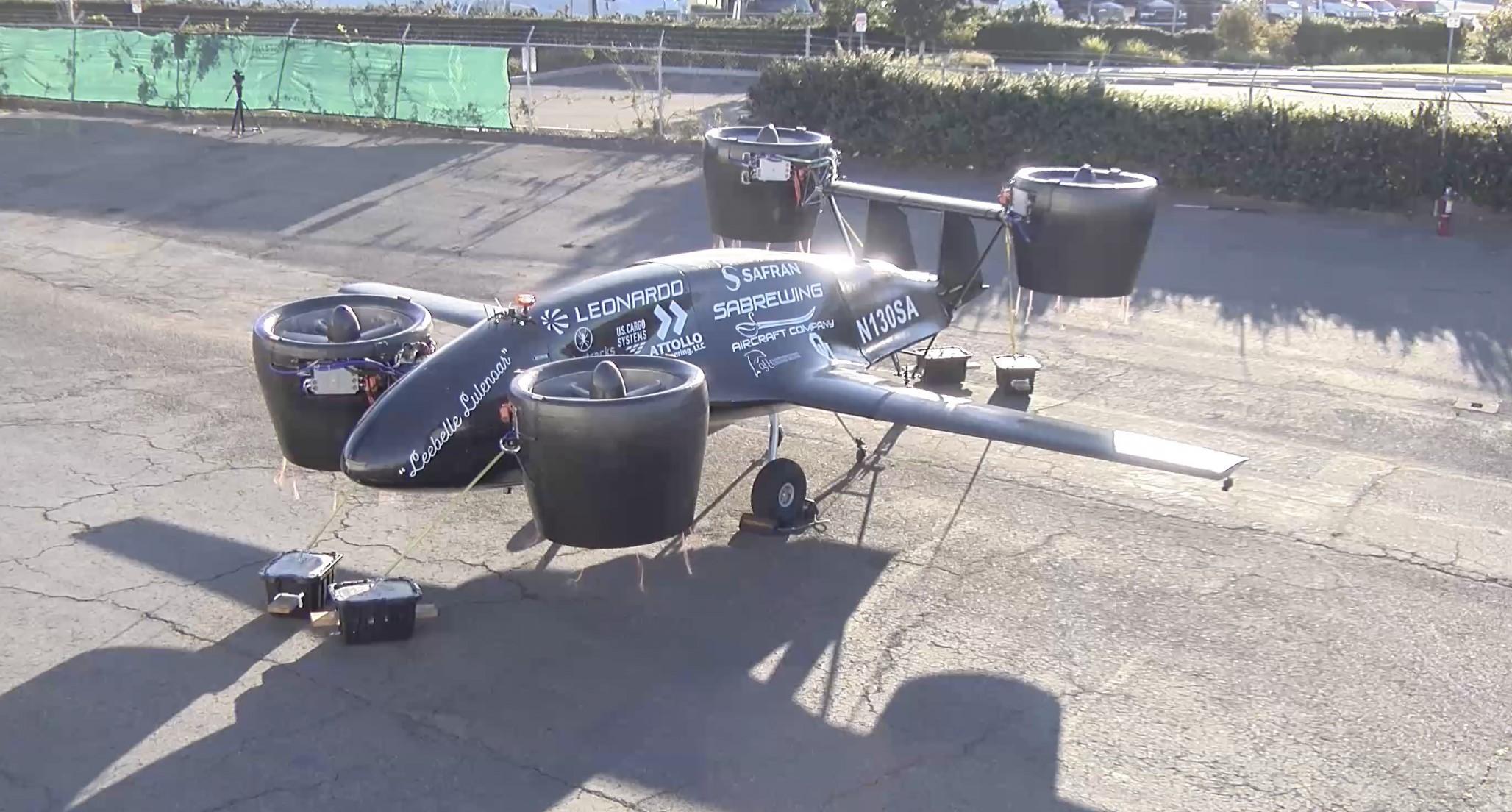
Sabrewing’s prototype cargo drone carried an 829-lb. payload on its first hover flight in September.
Based out of Oxnard, California, Sabrewing Aircraft Company is a startup seeking to develop and certify a family of autonomous, hybrid-electric cargo drones. Dubbed the Rhaegal, the heavy-lift UAV would be capable of both conventional and vertical takeoff and landing (VTOL), with two variants–the smaller Rheagal-A and larger Rhaegal-B. Ed De Reyes, Sabrewing’s chairman and CEO, recently spoke to the AAM Report about the company’s testing and certification campaign. A partial transcript follows.
AAM Report: The Rhaegal-A completed its first hover flight in September. What comes next?
De Reyes: What’s next is we continue to build up altitude in the hover. We stayed in ground effect pretty much for the first flight, but subsequent flights will be higher and higher. The next phase will be CTOL [conventional takeoff and landing]. And finally at the end we’ll take off VTOL, transition to straight and level, and then land vertically. So, that’s very much where we need to be.
How are things coming along with the FAA on certification?
We’re still waiting for a G-1 [certification basis]. We’ve been told that, due to budget restraints, the FAA doesn’t have the manpower to review our turbo-electric drivetrain. Which is kind of surprising to me, because we’re basically like a big flying APU [auxiliary power unit]. We use turbines to turn generators and create electric power–which is nothing new in aviation. Yet for some reason, the FAA feels they have to scrutinize that sort of a power setup.
What advantage does the turbo-electric design offer over batteries?
Batteries don’t have much endurance, and they don’t do well in the cold. If you look at designs from Joby and Archer–they can probably go 100 miles between charges. But 100 miles for a cargo carrier is nothing, and they can’t afford to wait around for batteries to charge. Also, we have to be able to deliver cargo anywhere on Earth. So if it’s a parking lot in Podunk, Arkansas, for example–where are you going to find batteries there?
What market opportunities would cargo operators enjoy by incorporating the Rhaegal into their fleets?
The ability to get into areas where no one can get into now, except for by helicopter, is really lucrative–and we are much more efficient than a helicopter. Look at places like Alaska, where almost 20% of their communities are not serviced by any kind of road or airport or seaport or railroad or anything like that. There are a lot of populations that don’t live near those kinds of facilities, but yet, they still need food and water and all sorts of things.
The Rhaegal-A can carry payloads up to 5,000-lb., and the -B can carry up to 10,000-lb., which is a lot for an eVTOL. Why such an emphasis on payload?
The cargo consolidators I’ve talked to tell me that moving a few hundred pounds on a cargo aircraft is just not realistic. They just can’t move enough cargo to make a profit at that price point. Really, we haven’t heard there’s much appetite under 2,000-lb.—and often much greater. One of our competitors is trying to fly 300-lb. up to 150 miles, and they’re going to have to charge $1 per pound just to recoup the hard costs, which will then be passed on to customers. But if you’re carrying a lot more weight—since you’re able to spread it out—you can cut the cost or make up the difference in profit.





